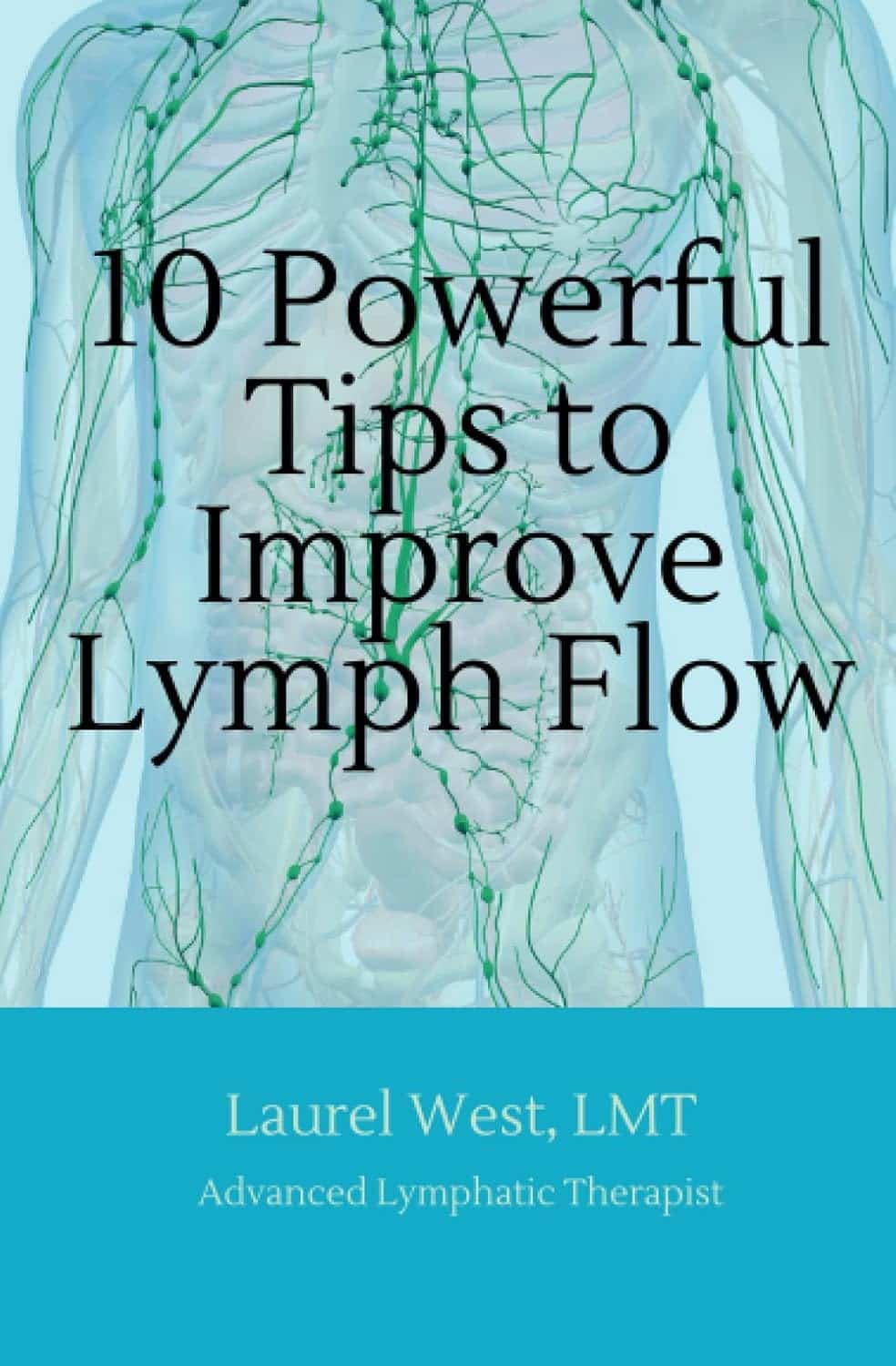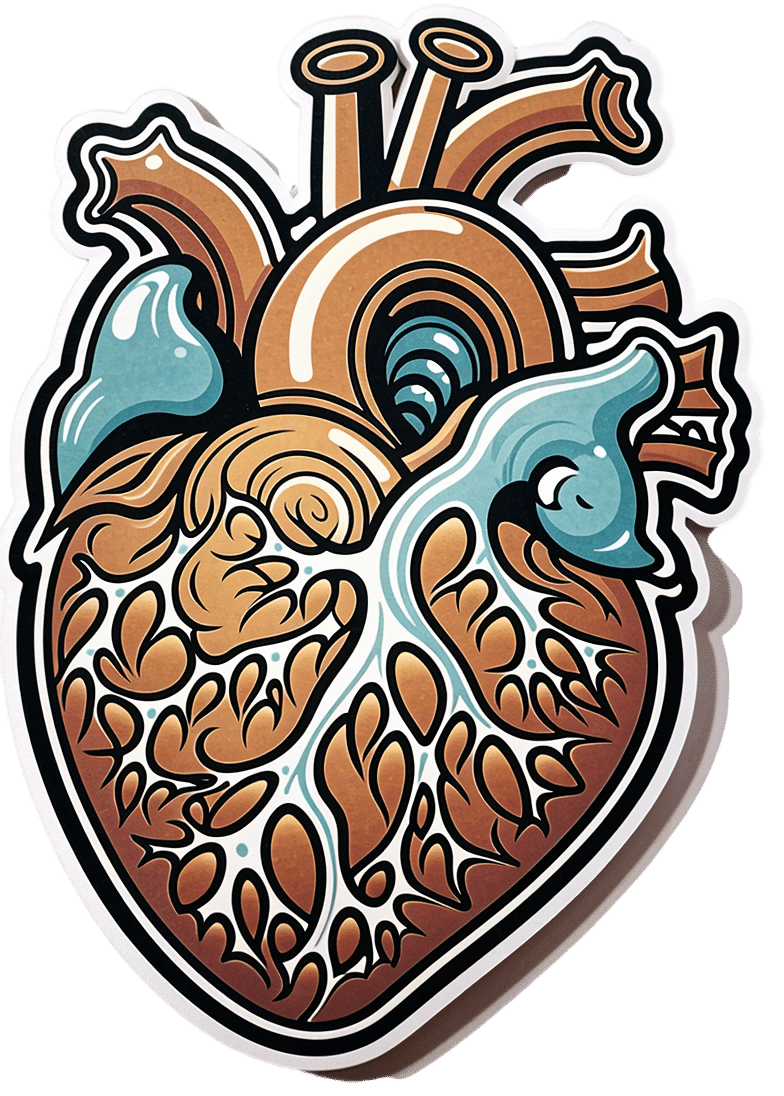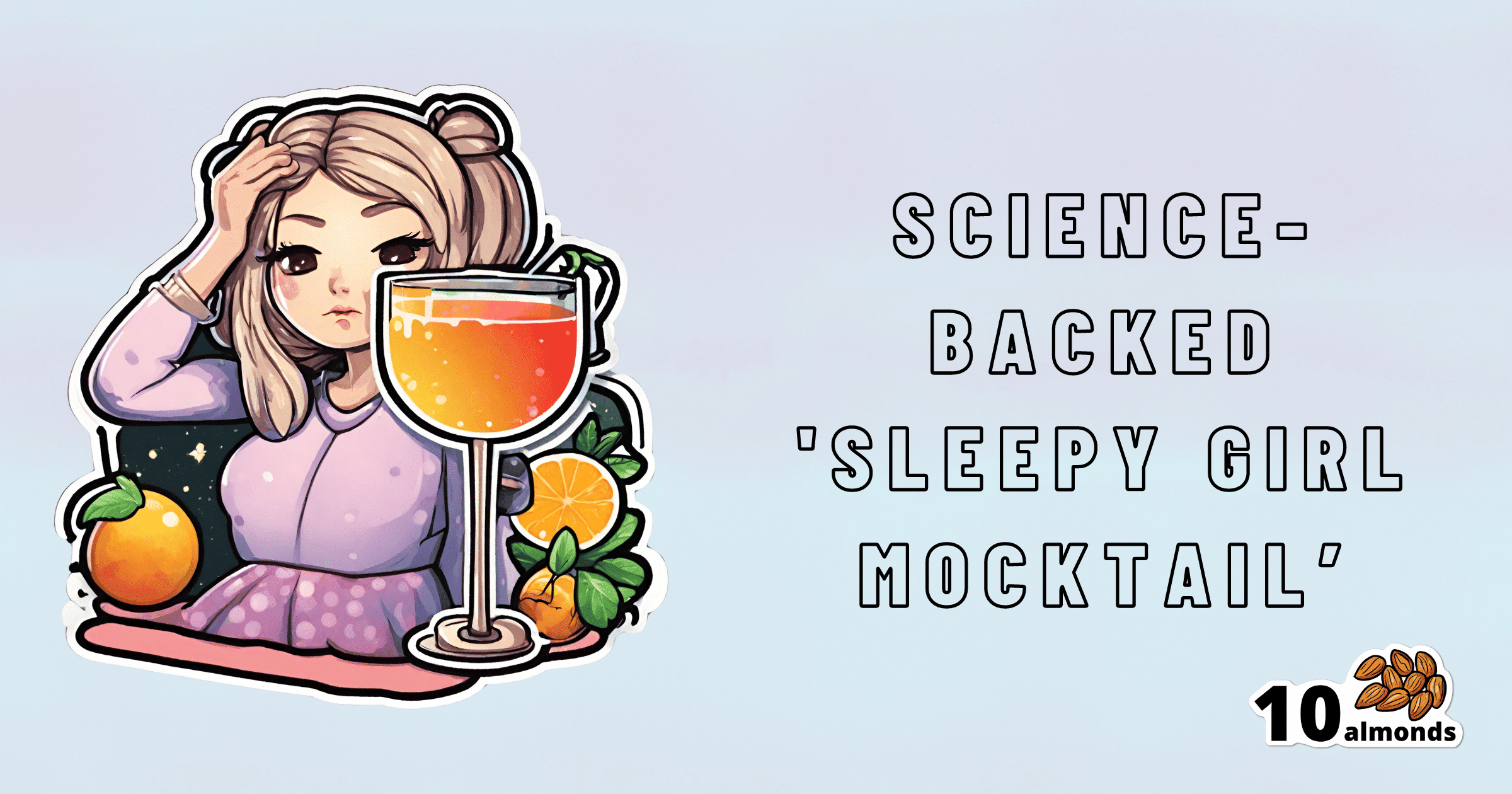
The Diabetes Drugs That Can Cut Asthma Attacks By 70%
10almonds is reader-supported. We may, at no cost to you, receive a portion of sales if you purchase a product through a link in this article.
Asthma, obesity, and type 2 diabetes are closely linked, with the latter two greatly increasing asthma attack risk.
While bronchodilators / corticosteroids can have immediate adverse effects due to sympathetic nervous system activation, and lasting adverse effects due to the damage it does to metabolic health, diabetes drugs, on the other hand, can improve things with (for most people) fewer unwanted side effects.
Great! Which drugs?
Metformin, and glucagon-like peptide-1 receptor agonists (GLP-1RAs).
Specifically, researchers have found:
- Metformin is associated with a 30% reduction in asthma attacks
- GLP-1RAs are associated with a 40% reduction in asthma attacks
…and yes, they stack, making for a 70% reduction in the case of people taking both. Furthermore, the results are independent of weight, glycemic control, or asthma phenotype.
In terms of what was counted, the primary outcome was asthma attacks at 12-month follow-up, defined by oral corticosteroid use, emergency visits, hospitalizations, or death.
The effect of metformin on asthma attacks was not affected by BMI, HbA1c levels, eosinophil count, asthma severity, or sex.
Of the various extra antidiabetic drugs trialled in this study, only GLP-1 receptor agonists showed a further and sustained reduction in asthma attacks.
Here’s the study itself, hot off the press, published on Monday:
JAMA Int. Med. | Antidiabetic Medication and Asthma Attacks
“But what if I’m not diabetic?”
Good news:
More than half of all US adults are eligible for semaglutide therapy ← this is because they’ve expanded the things that semaglutide (the widely-used GLP-1 receptor agonist drug) can be prescribed for, now going beyond just diabetes and/or weight loss 😎
And metformin, of course, is more readily available than semaglutide, so by all means speak with your doctor/pharmacist about that, if it’s of interest to you.
Take care!
Don’t Forget…
Did you arrive here from our newsletter? Don’t forget to return to the email to continue learning!
Recommended
Learn to Age Gracefully
Join the 98k+ American women taking control of their health & aging with our 100% free (and fun!) daily emails:
-
10 Powerful Tips To Improve Lymph Flow – by Laurel West
10almonds is reader-supported. We may, at no cost to you, receive a portion of sales if you purchase a product through a link in this article.
The lymphatic system is a large part of the body’s “clean-up” system, as well having an important role in fighting cancer specifically. As such, while it doesn’t get nearly as much popular attention as our circulatory system or our nervous system, say, it is critically important.
The author, a massage therapist, knows her stuff when it comes to lymph, and shows that here.
As this is a very lean book, weighing in at a mere 87 pages, you can imagine it gets straight to the point.
So will we! The titular “10 powerful tips” are:
- Drink water
- Matcha meditation
- Breathwork
- Dry brushing
- Hydrotherapy
- Stretching
- Sweating
- Lymphatic facial massage
- Advanced lymphatic massage
- Anti-inflammatory diet
Of course, she does explain each of those; some are more obvious than others; “drink water” takes less explanation than “advanced lymphatic massage”, say.
The style is, as you might expect, concise. It’s more of a primer than a textbook, and it does communicate its ideas clearly.
Bottom line: if you’d like to manage your lymph better, this book is an excellent way to get started.
Click here to check out 10 Powerful Tips To Improve Lymph Flow, and improve your lymph flow.
Share This Post
-
What Happens To Your Body When You Stop Drinking Alcohol
10almonds is reader-supported. We may, at no cost to you, receive a portion of sales if you purchase a product through a link in this article.
Immediately after we stop drinking is rarely when we feel our best. But how long is it before we can expect to see benefits, instead of just suffering?
Timeline
After stopping drinking alcohol for…
- Seconds: the liver starts making progress filtering out toxins and sugars; ethanol starts to leave the system
- 1 hour: fatigue sets in as the body uses a lot of energy to metabolize and eliminate alcohol. However, sleep quality (if one goes to sleep now) is low because alcohol disrupts the brain patterns required for restful sleep
- 6–12 hours: the immune system starts recovering from the suppression caused by alcohol
- 24 hours: immune system is back to normal; withdrawal symptoms may occur in the case of heavy drinkers
- 3–5 days: resting blood pressure begins to drop, as stress levels decrease (alcohol may seem anxiolytic, but it is actually anxiogenic; it just masks its own effect in this regard). Also, because of insulin responses improving, appetite reduces. The liver, once it has finished dealing your last drinking session (if you used to drink all the time, it probably had a backlog to clear), can now begin to make repairs on itself.
- 1 week: skin will start looking better, as antidiuretic hormone levels neutralize, leading to a healthier maintenance of hydration
- 2 weeks: cognitive abilities improve as the brain begins to make progress in repairing itself. At the same time, kidneys start to heal.
- 3–4 weeks: the liver begins to regenerate in earnest. You may wonder what took it so long given the liver’s famous regenerative abilities, but in this case, the liver was also the organ that took the most damage from drinking, so its regeneration gets off to a slow start (in contrast, if the liver had “merely” suffered physical trauma, such as being shot, stabbed,
or eaten by eagles,it’d start regenerating vigorously as soon as the immediate wound-response had been tended to). Once it is able to pick up the pace though, overall health improves, as the liver can focus on breaking down other toxins. - 1–2 months: the heart is able to repair itself, and start to become stronger again (dependent on other lifestyle factors, of course).
- 3 months and more: bodily repairs continue (for example, the damage to the liver is often so severe that it can take quite a bit longer to recover completely, and repairs in the brain are always slow, for reasons beyond the scope of this article). Looking at the big picture, at this point we also see other benefits, such as reduced cancer risks.
In short… It’s never too soon to stop, but it’s also never too late, unless you are going to die in the next few days. So long as you’ll be in the land of the living for a few days yet, there’s time to enjoy the benefits of stopping.
Most importantly: the timeline for the most important repairs is not as long as many people might think, and that itself can be very motivating.
For more detail on much of the above, enjoy:
Click Here If The Embedded Video Doesn’t Load Automatically!
Want to learn more?
You might also like to read:
- Can We Drink To Good Health?
- How To Reduce Or Quit Alcohol
- Addiction Myths That Are Hard To Quit
- How To Unfatty A Fatty Liver
Take care!
Share This Post
-
Can You Gain Muscle & Lose Fat At The Same Time?
10almonds is reader-supported. We may, at no cost to you, receive a portion of sales if you purchase a product through a link in this article.
It’s Q&A Day at 10almonds!
Have a question or a request? We love to hear from you!
In cases where we’ve already covered something, we might link to what we wrote before, but will always be happy to revisit any of our topics again in the future too—there’s always more to say!
As ever: if the question/request can be answered briefly, we’ll do it here in our Q&A Thursday edition. If not, we’ll make a main feature of it shortly afterwards!
So, no question/request too big or small 😎
❝Is it possible to lose fat and gain muscle at the same time, or do we need to focus on one and then the other, and if so, which order is best?❞
Contrary to popular belief, you can do both simultaneously! However, it’s not as easy as doing just one or the other, which is why most bodybuilders, for example, have a “building phase” and a “cutting phase”.
The reason it’s difficult is because of the diet. Growing muscle doesn’t just take protein and micronutrients; it takes energy as well, which must come from carbohydrates and/or fats. Therefore, it is tricky to eat enough to build muscle and to fuel the workouts that are required to build the muscle (you can’t hit the gym in a state of rabbit starvation* and expect to perform well at your workout), while at the same time not eating enough carbs/fats to have any excess to store as fat.
*So-called because rabbit-meat is very lean, such that when during times of famine, European peasants tried to subsist off mostly rabbits, their health quickly plummeted for lack of energy. It’s also been called “salmon starvation”, apparently, for the same reason:
In French it’s called “Mal de caribou” (caribou sickness), by the way. But you get the idea: eat too much lean protein without enough carbs/fats, and woe shall befall.
So, if you want to do both at once, you need to be incredibly on top of your macros, and the bad news is, only you (or a coach working directly with you) can work out what precise macros requirements your body has, because it depends on your body and your activities.
The easier “half-way house”
We will get to the “building phase” and “cutting phase” of bodybuilders, but first, here’s an option that’s very worthy of consideration, and it is: forget about your weight and just focus on health while incidentally doing regular resistance exercises and HIIT.
What will happen if you do this (assuming a healthy balanced diet, nothing special and without counting anything, but we’re talking at least mostly whole-foods, and at least mostly plants; the Mediterranean diet is great for this, as it is for most things) is:
- The dietary approach described will gradually improve your metabolic health if it wasn’t already good. If it was already good, it’ll likely just maintain it, rather than improve it.
- The resistance exercises will, if engaged with seriously (it has to be difficult to do, or your muscles won’t have any reason to grow), gradually build muscle. This will be very gradual, because you’re not eating for bodybuilding, nor optimizing your general lifestyle for same. Historically many women have feared lifting weights because they don’t want to “look like a weightlifter”, but the kinds of bodies that word brings to mind are not the kind that happen by accident (especially for women, with our different hormones guiding our bodies to a different composition); it takes a lot of single-minded dedication to specifically optimize size gains, for a long time.
- The high-intensity interval training (HIIT) will more rapidly improve your metabolic health, and unlike most forms of exercise, it will actually result in a gradual reduction of fat, if you have superfluous fat to lose. This is because whereas most forms of cardio exercise increase the heartrate for a while but then have a corresponding metabolic slump afterwards to make up for it, HIIT confuses the heart (in a good way) which results in it having to grow stronger, and not doing any compensatory metabolic slump:
How To Do HIIT (Without Wrecking Your Body) ← as well as the “how to”, this also gives some of the science behind it, too
This will, thus, result in gradual gain of muscle and loss of fat—or if you take it easier with the exercise, then you can easily settle into just maintaining your body composition as it is, but that wasn’t the question today.
So, there you have it, that’s how to do both at once! Now, if you want more dramatic results, then more dramatic methods are called for:
What bodybuilders (mostly) do
Matters of genetic predisposition and commonplace use of steroids aside, here’s how bodybuilders get that “lots of muscle, no fat” figure:
- First, get into “moderate” shape if not already there.
- Bulk up: eat amounts of food that will seem unreasonable to a non-bodybuilder; eating 2x or even 3x the “recommended” daily calorie amount is common; focus is typically on getting adequate (for bodybuilding purposes) protein while also carb-loading for workouts and getting at least enough fats for fat-soluble vitamins to work. In the gym, focus on doing sets of very few reps with the heaviest weights one can safely lift, while doing minimal cardio, and also sleeping a lot (9–12hrs per day), which is essential because this is putting a huge strain on the body and it needs a chance to recover and rebuild.
- Cut down: maintain protein intake (to at least mostly maintain muscles) while keeping carbs and fats low, doing cardio work (HIIT is still ideal) and running a calorie deficit for a short while (there is no use in trying to maintain a long-term calorie deficit; your body will try to save you from starvation by storing any fat it can and slowing your metabolism).
Phases 2 and 3 are then cycled, alternating every month, or every 6 weeks, or every 2 months or so, depending on personal preferences and scheduling considerations (bodybuilders will often have competitions they are working towards, so they need to time things to be at the end of a cutting phase to look their “best” by bodybuilder standards).
Disclaimer: bodybuilding is complex, and can be ruinous to the health if practised inexpertly, because of its extreme nature. We don’t recommend serious bodybuilding per se in general, but if you are going to do it, please consult with a professional bodybuilding coach, and do not rely on a few paragraphs from us that are intended only to give the most basic overview of how bodybuilders can approach the “gain muscle, lose fat” problem.
Want to know more?
We’ve written on some related topics previously; here’s a three-part series:
- How To Lose Weight (Healthily!)
- How To Build Muscle (Healthily!)
- How To Gain Weight (Healthily!) ← this one’s specifically about gaining healthy levels of fat, for any who want/need that
And also:
Can We Do Fat Redistribution? ← yes we can, but there are caveats
Take care!
Share This Post
Related Posts
-
6 Signs Of A Heart Attack… A Month In Advance
10almonds is reader-supported. We may, at no cost to you, receive a portion of sales if you purchase a product through a link in this article.
Many people know the signs of a heart attack when it’s happening, but how about before it’s too late to avoid it?
The signs
- Unusual fatigue: persistent tiredness that doesn’t improve with rest
- Shortness of breath: unexplained breathlessness during light activities or rest, which can be caused by fluid buildup in the lungs (because the heart isn’t circulating blood as well as it should)
- Chest discomfort: pain, pressure, tightness, or aching in the chest due to reduced blood flow to the heart muscle—often occurring during physical exertion or emotional stress
- Frequent indigestion: means that heartburn could be heart-related! This is about persistently reoccurring discomfort or pain in the upper abdomen
- Sleep disturbances: difficulties falling asleep, staying asleep, or waking up abruptly
- Excessive sweating: unexplained cold sweats or sudden sweating without physical exertion or excessive heat, can be a response to the decreased oxygen levels caused by less efficient blood flow
Note: this is a list of warning signs, not a diagnostic tool. Any or even all of these could be caused by something else. Just, don’t ignore the signs and do get yourself checked out.
For more details on each of these, enjoy:
Click Here If The Embedded Video Doesn’t Load Automatically!
Want to learn more?
You might also like to read:
Take care!
Don’t Forget…
Did you arrive here from our newsletter? Don’t forget to return to the email to continue learning!
Learn to Age Gracefully
Join the 98k+ American women taking control of their health & aging with our 100% free (and fun!) daily emails:
-
Turns out the viral ‘Sleepy Girl Mocktail’ is backed by science. Should you try it?
10almonds is reader-supported. We may, at no cost to you, receive a portion of sales if you purchase a product through a link in this article.
Many of us wish we could get a better night’s sleep. Wouldn’t it be great if it was as easy as a mocktail before bed?
That’s what the latest viral trend might have us believe. The “Sleepy Girl Mocktail” is a mix of tart cherry juice, powdered magnesium supplement and soda water. TikTok videos featuring the concoction have garnered hundreds of thousands of views. But, what does the science say? Do these ingredients actually help us sleep?
Tart cherry juice
There is research to show including tart cherry juice in your diet improves overall sleep. Clinical trials show tart cherry juice increases sleep quality and quantity, as well as a lessening insomnia symptoms (compared to a placebo). This could be due to the presence of melatonin, a sleep-promoting hormone, in cherries.
Tart cherry varieties such as Jerte Valley or Montmorency have the highest concentration of melatonin (approximately 0.135 micrograms of melatonin per 100g of cherry juice). Over the counter melatonin supplements can range from 0.5 milligram to over 100 milligrams, with research suggesting those beginning to take melatonin start with a dose of 0.5–2 milligrams to see an improvement in sleep.
Melatonin naturally occurs in our bodies. Our body clock promotes the release of melatonin in the evening to help us sleep, specifically in the two hours before our natural bedtime.
If we want to increase our melatonin intake with external sources, such as cherries, then we should be timing our intake with our natural increase in melatonin. Supplementing melatonin too close to bed will mean we may not get the sleep-promoting benefits in time to get off to sleep easily. Taking melatonin too late may even harm our long-term sleep health by sending the message to our body clock to delay the release of melatonin until later in the evening.
Magnesium – but how much?
Magnesium also works to promote melatonin, and magnesium supplements have been shown to improve sleep outcomes.
However, results vary depending on the amount of magnesium people take. And we don’t yet have the answers on the best dose of magnesium for sleep benefits.
We do know magnesium plays a vital role in energy production and bone development, making it an important daily nutrient for our diets. Foods rich in magnesium include wheat cereal or bread, almonds, cashews, pumpkin seeds, spinach, artichokes, green beans, soy milk and dark chocolate.
Bubbly water
Soda water serves as the base of the drink, rather than a pathway to better sleep. And bubbly water may make the mix more palatable. It is important to keep in mind that drinking fluids close to bedtime can be disruptive to our sleep as it might lead to waking during the night to urinate.
Healthy sleep recommendations include avoiding water intake in the two hours before bed. Having carbonated beverages too close to bed can also trigger digestive symptoms such as bloating, gassiness and reflux during the night.
Bottoms up?
Overall, there is evidence to support trying out the Sleepy Girl Mocktail to see if it improves sleep, however there are some key things to remember:
timing: to get the benefits of this drink, avoid having it too close to bed. Aim to have it two hours before your usual bedtime and avoid fluids after this time
consistency: no drink is going to be an immediate cure for poor sleep. However, this recipe could help promote sleep if used strategically (at the right time) and consistently as part of a balanced diet. It may also introduce a calming evening routine that helps your brain relax and signals it’s time for bed
- maximum magnesium: be mindful of the amount of magnesium you are consuming. While there are many health benefits to magnesium, the recommended daily maximum amounts are 420mg for adult males and 320mg for adult females. Exceeding the maximum can lead to low blood pressure, respiratory distress, stomach problems, muscle weakness and mood problems
sugar: in some of the TikTok recipes sugar (as flavoured sodas, syrups or lollies) is added to the drink. While this may help hide the taste of the tart cherry juice, the consumption of sugar too close to bed may make it more difficult to get to sleep. And sugar in the evening raises blood sugar levels at a time when our body is not primed to be processing sugar. Long term, this can increase our risk of diabetes
sleep environment: follow good sleep hygiene practices including keeping a consistent bedtime and wake time, a wind-down routine before bed, avoiding electronic device use like phones or laptops in bed, and avoiding bright light in the evening. Bright light works to suppress our melatonin levels in the evening and make us more alert.
What about other drinks?
Other common evening beverages include herbal tisanes or teas, hot chocolate, or warm milk.
Milk can be especially beneficial for sleep, as it contains the amino acid tryptophan, which can promote melatonin production. Again, it is important to also consider the timing of these drinks and to avoid any caffeine in tea and too much chocolate too close to bedtime, as this can make us more alert rather than sleepy.
Getting enough sleep is crucial to our health and wellbeing. If you have tried multiple strategies to improve your sleep and things are not getting better, it may be time to seek professional advice, such as from a GP.
Charlotte Gupta, Postdoctoral research fellow, CQUniversity Australia
This article is republished from The Conversation under a Creative Commons license. Read the original article.
Don’t Forget…
Did you arrive here from our newsletter? Don’t forget to return to the email to continue learning!
Learn to Age Gracefully
Join the 98k+ American women taking control of their health & aging with our 100% free (and fun!) daily emails:
-
Shrimp vs Caviar – Which is Healthier?
10almonds is reader-supported. We may, at no cost to you, receive a portion of sales if you purchase a product through a link in this article.
Our Verdict
When comparing shrimp to caviar, we picked the caviar.
Why?
Both of these seafoods share a common history (also shared with lobster, by the way) of “nutrient-dense peasant-food that got gentrified and now it’s more expensive despite being easier to source”. But, cost and social quirks aside, what are their strengths and weaknesses?
In terms of macros, both are high in protein, but caviar is much higher in fat. You may be wondering: are the fats healthy? And the answer is that it’s a fairly even mix between monounsaturated (healthy), polyunsaturated (healthy), and saturated (unhealthy). The fact that caviar is generally enjoyed in very small portions is its saving grace here, but quantity for quantity, shrimp is the natural winner on macros.
…unless we take into account the omega-3 and omega-6 balance, in which case, it’s worthy of note that caviar has more omega-3 (which most people could do with consuming more of) while shrimp has more omega-6 (which most people could do with consuming less of).
When it comes to vitamins, caviar has more of vitamins A, B1, B2, B5, B6, B9, B12, D, K, and choline; nor are the margins small in most cases, being multiples (or sometimes, tens of multiples) higher. Shrimp, meanwhile, boasts only more vitamin B3.
In the category of minerals, caviar leads with more calcium, iron, magnesium, manganese, phosphorus, potassium, and selenium, while shrimp has more copper and zinc.
All in all, while shrimp has its benefits for being lower in fat (and thus also, for those whom that may interest, lower in calories), caviar wins the day by virtue of its overwhelming nutritional density.
Want to learn more?
You might like to read:
What Omega-3 Fatty Acids Really Do For Us
Take care!
Don’t Forget…
Did you arrive here from our newsletter? Don’t forget to return to the email to continue learning!
Learn to Age Gracefully
Join the 98k+ American women taking control of their health & aging with our 100% free (and fun!) daily emails:








